Everyone that loves cattle wishes they had expansive pieces of land. But then, that is not always the case.
However, having a constrained space doesn’t mean that you can’t pursue your passion for keeping livestock.
If you’d love to keep cattle but have a small piece of land, the best way to optimize it is by keeping miniature cattle breeds.
Their tiny size means that you can comfortably raise them on small farms.
What are Miniature Cattle?
As the name suggests, miniature cattle are smaller than standard full-size cattle.
Their average body size is up to 30% smaller than traditional cattle breeds.
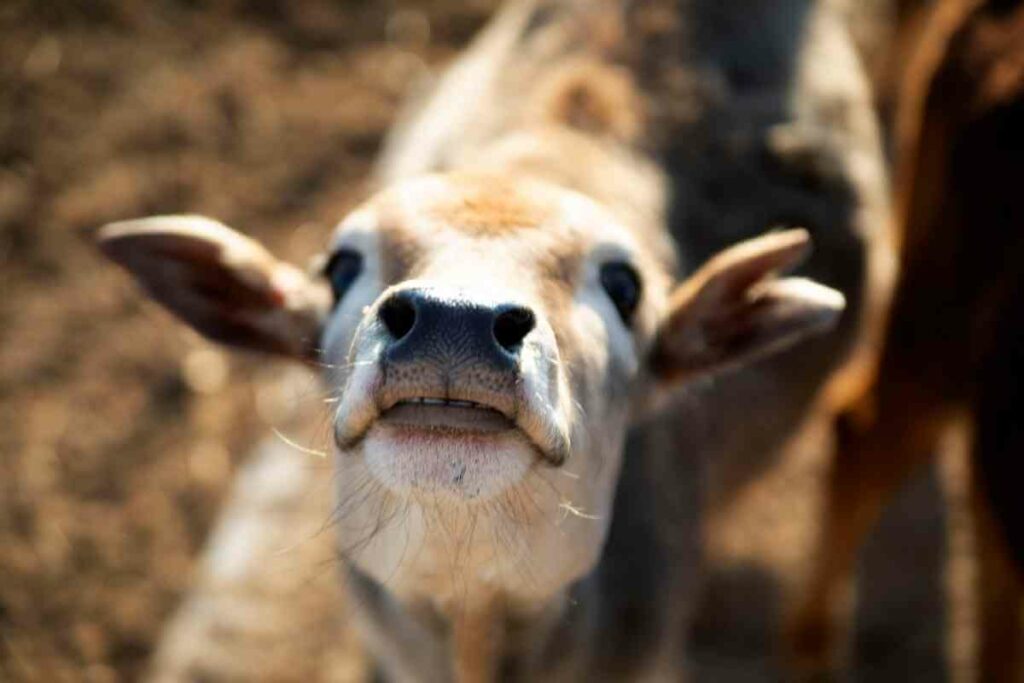
There are three types of miniature cattle based on their height at the hip, namely:
- Standard miniature cattle – these range between 36 inches and 42 inches.
- Micro-miniature cattle – these have a hip height of less than 36 inches.
- Midsize miniature cattle – these range between 42 inches and 48 inches.
Benefits of Rearing Miniature Cattle Breeds
Here are the top benefits of keeping miniature cattle on your farm.
Sustainable Milk Production
A healthy full-size cow produces at least six gallons of milk daily when at its peak.
While this is enough to sustain a family and leave some for selling, it has its drawbacks.
First, you’ll need to invest in additional storage facilities to keep the milk fresh.
Also, you might not know what to do with the product, especially if you’re still new to the industry.
Contrarily, miniature cattle produce 1.5 gallons of milk or less daily.
For many people, this is enough to sustain their need for milk and other dairy products such as cheese, ghee, butter, yogurt, etc.
What’s More: It spares you of the trouble of looking for additional storage.
Reduced Demand for Food
If you’re familiar with livestock keeping, you probably know that dairy cattle require more nutrients than beef cattle.
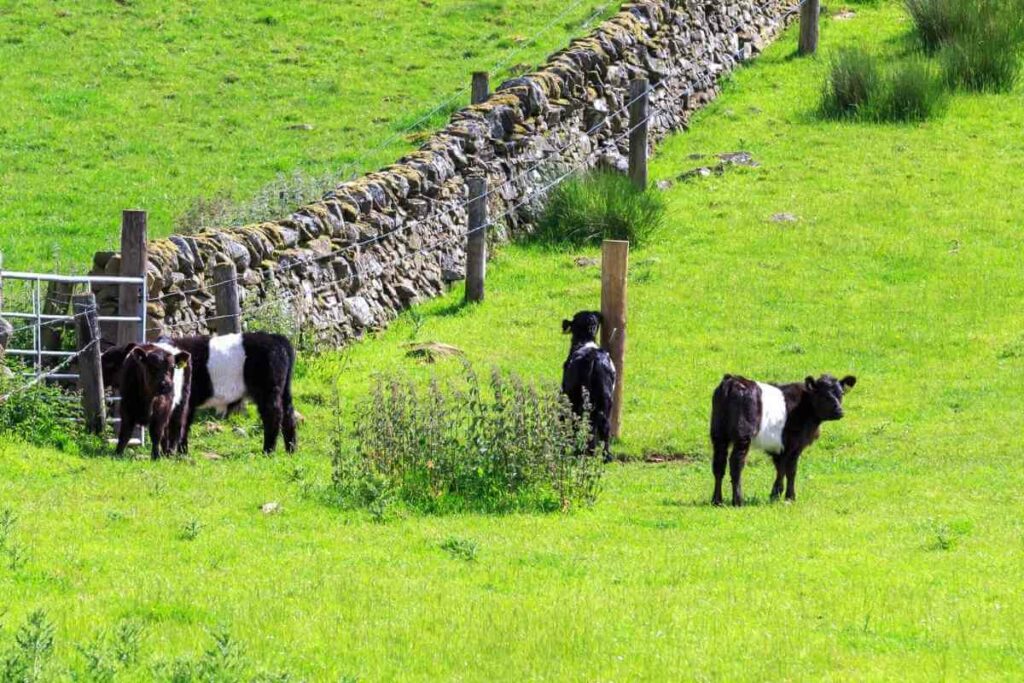
You need to supplement grazing with hay, particularly if you want your animals to produce enough milk.
Additionally, a diet that predominantly consists of pasture grass and lacks other nutrients increases the risk of digestive issues.
Eventually, the manure made from your cattle’s waste will be deficient in some vital nutrients.
Luckily, miniature cattle don’t consume as much as other species.
Instead, they thrive on balanced diets consisting of barley, oats, sorghum, soybeans, and wheat alongside pasture grass.
For Example: One miniature cow eats a portion of what a standard breed consumes. This allows you to save money and use it on other projects.
Popular Miniature Cattle Breeds
Before you start keeping miniature cattle, it’s wise to know the different breeds available to you.
This information helps you choose a species that suits your style.
Here are the popular types of miniature cattle.
Miniature Holstein
Besides being adorable, miniature Holsteins produce a lot of milk.
As such, they can serve as pets and milk cows. The milk is so much that you could get enough to feed you and your family and sell the surplus.
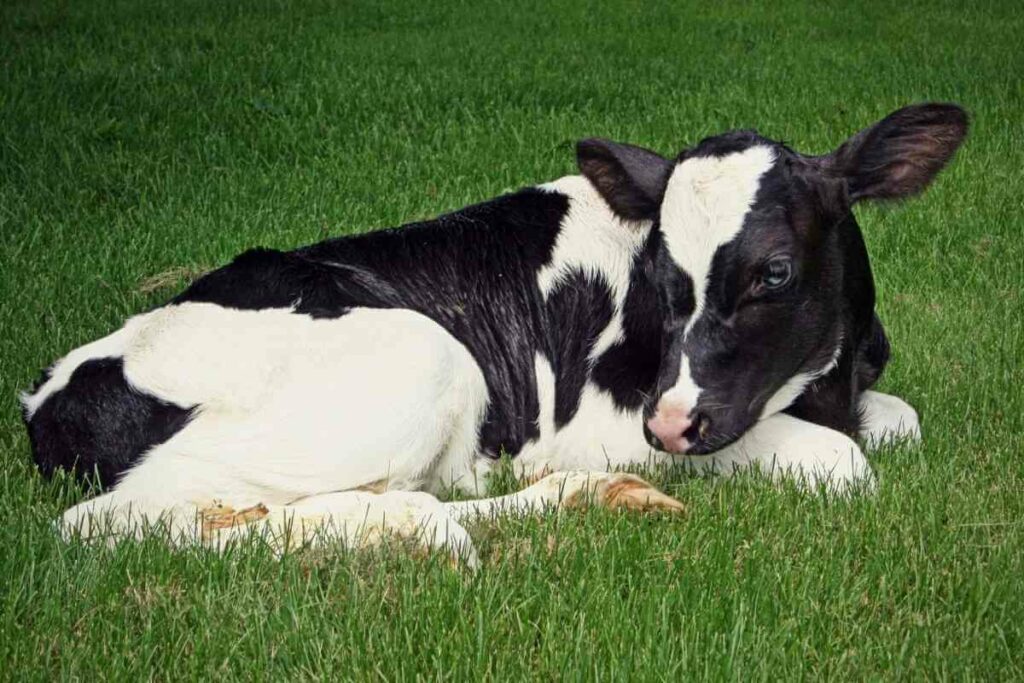
On average, this breed produces two to three gallons of milk daily.
If you’re lucky, you can get a cow that produces milk three times a day for the entire lactation period of 305 days.
Regarding size, a miniature Holstein measures approximately 42 inches in height, making them a miniature midsize breed.
They’re related to Holsteins that have a hip height of 58 inches.
From Experience: It’s worth noting that this breed is renowned for being docile and friendly. You can leave them near children without concerns over potential accidents.
Miniature Belted Galloway
Miniature Belted Galloways, also called Belties, are famous for their ability to withstand harsh climatic conditions.
This breed originated from southwestern Scotland.
Interestingly, Belted Galloways have a double coat, with the outer layer being coarse and water-resistant.
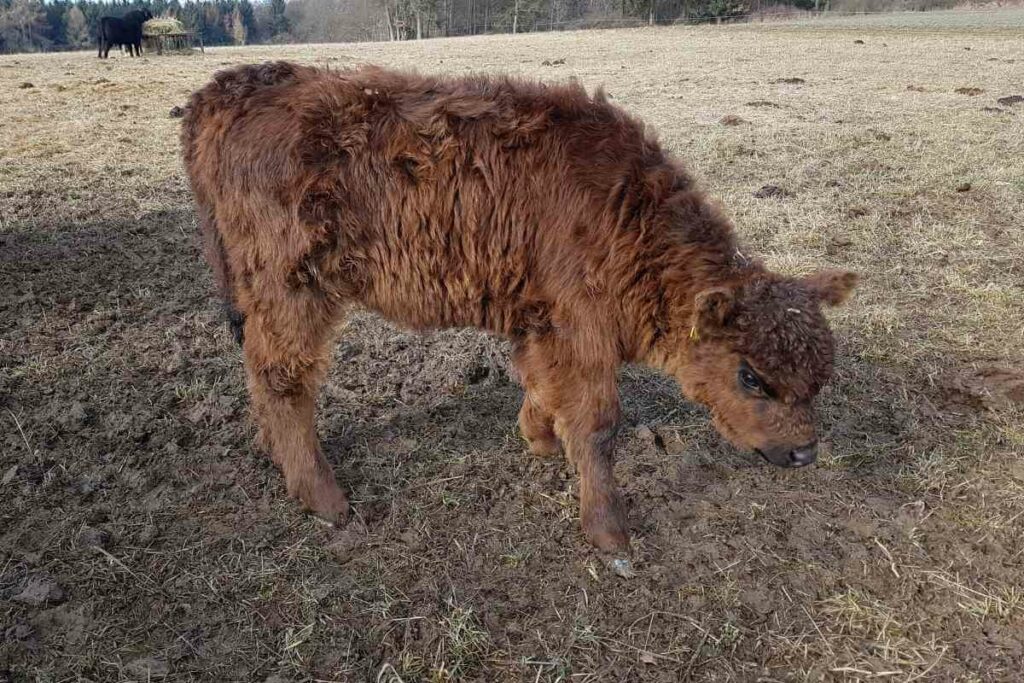
The inner layer appears woolen instead of the ‘normal’ hairy you would find in other cattle breeds. This uniqueness protects the animal against cold weather.
Belted Galloways are so-called because of the white ‘belt’ around their midriff.
Otherwise, the rest of their body has a solid color. An adult cow has a height of 42 inches.
Moreover, Belties are hornless, sparing you of the cost of dehorning and the potential dangers that come with horned animals.
Compared to other breeds, Belties require less feed to gain one kilogram in body weight.
This means that you use less money to feed them without compromising their size. As a result, you make bigger profits when you sell them as beef.
Dexter Mini Cows
Dexter mini cows owe their origin to an Irish herdsman called Dexter in 1750.
The breed crossed to America in the early 1900s but has since struggled to become as populous as the others.
Indeed, the American Livestock Breed Conservancy classifies it as ‘rare’ in their Conservation Priority List.
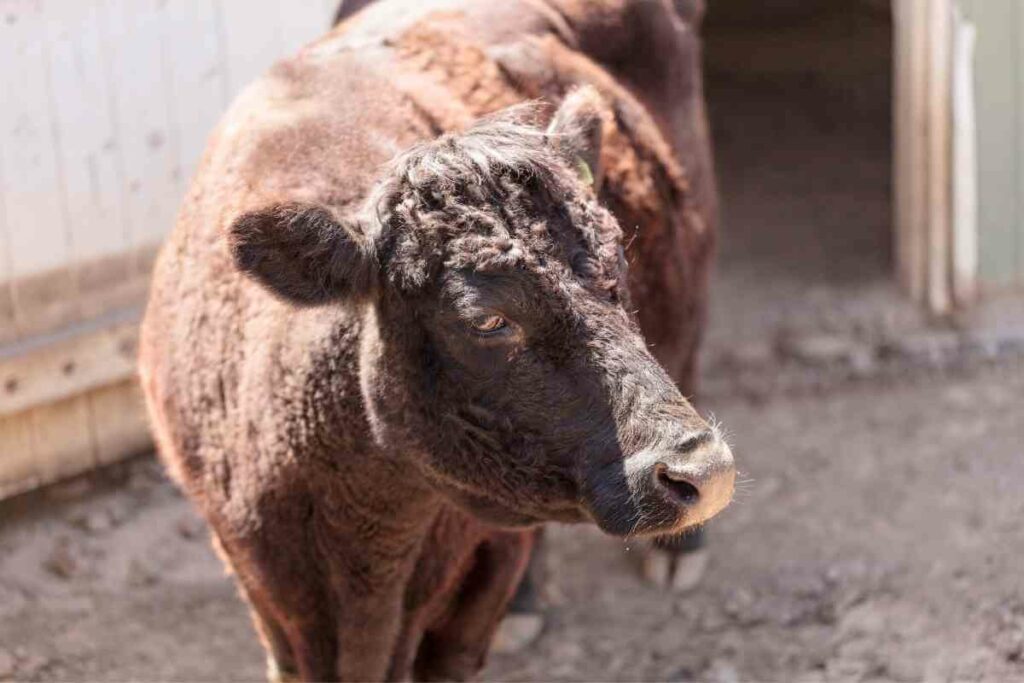
Despite their rarity, Dexters have an above-average lifespan, as they can live for up to 18 years.
This breed reproduces quickly, and an adult female can give birth ten times in her lifetime. Amazingly, they can also act as surrogate mothers.
Upon maturity, bulls weigh as much as 450 kgs (1,000 lbs.) and can measure up to 47 inches.
Due to their excellent foraging capability, high feed conversion, and exceptional meat-to-bone ratio, a Dexter steer can attain 180 kgs in 1½ years.
Most Dexters are black, but you will occasionally spot dark red cattle.
Miniature Zebu Cows
Most miniature cattle are crossbreeds of smaller animals from larger breeds.
This isn’t the case with miniature zebus. They’re purebred and date back to 6,000 BC.
The Zebu, also called the Brahman, was introduced in the United States in the earlier years of the 20th century.
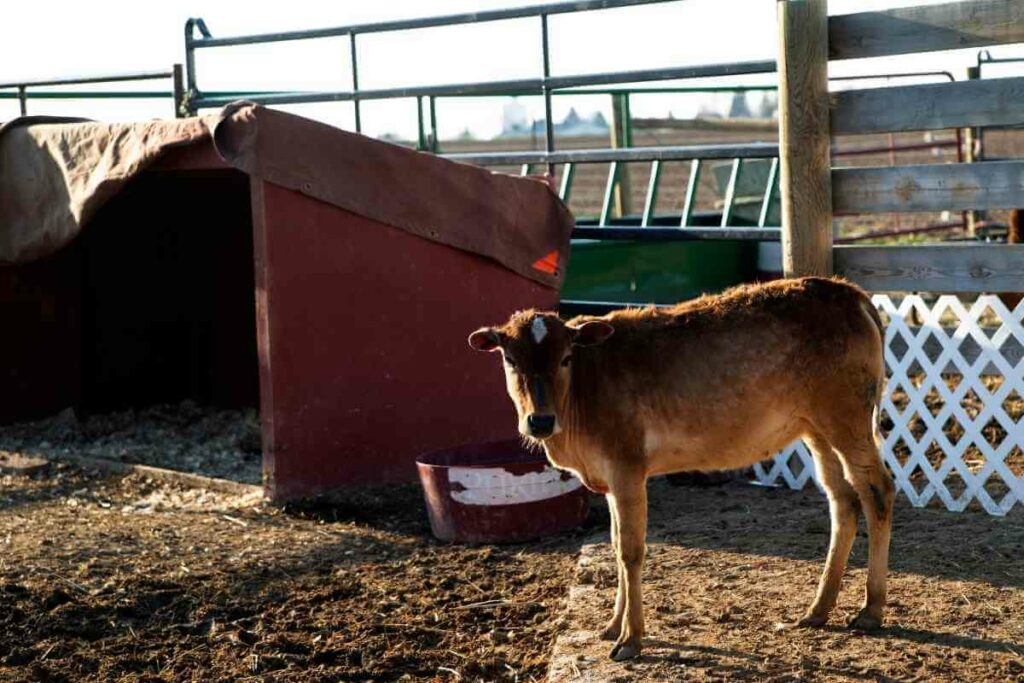
At the time, it was primarily kept in zoological gardens for research. This explains why it’s still a rare breed in North America.
The most distinctive feature of the Zebu breed is its appearance – these cattle resemble fawns.
They have conscious humps, especially among mature bulls. Some Zebus have horns, too.
Most people keep Zebus (unlike other miniature cattle breeds) for:
- agricultural fairs
- rode events
- and zoological gardens
This is because of their eye-catching physique and color. That said, some farmers rear them as pets or for milk and meat production.
The gestation period of a miniature Zebu is nine months like it is in human beings.
After birth, an average cow can produce a gallon of milk daily that’s rich in butterfat.
Cows are overly defensive of their calves, particularly during the first few weeks.
Miniature Herefords
Miniature Herefords originate from Herefordshire in the United Kingdom.
They’re still a relatively new breed, as they were introduced in the 1970s.
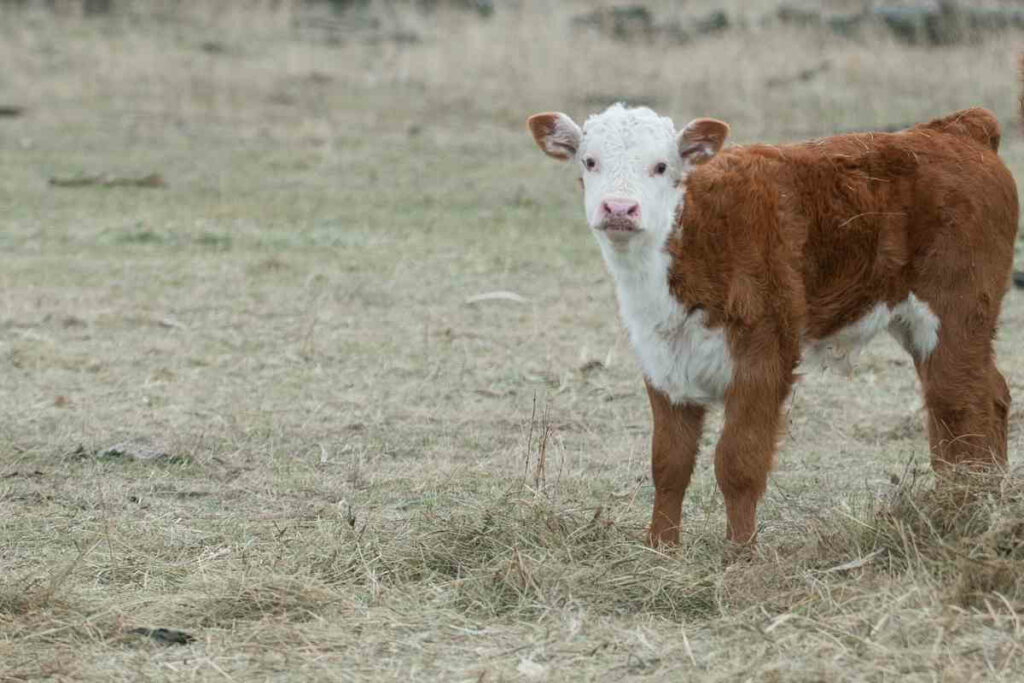
The breeder wanted a species with optimal feed conversion while maintaining a docile temperament and having the ability to withstand hardy conditions.
Chunky bodies with short legs characterize this breed.
It has excellent adaptability and can survive harsh conditions without affecting milk production and the quality of meat.
Even if you don’t have any experience dealing with cattle, you can handle mini Herefords easily due to their peaceful nature.
Furthermore: This breed is suitable for small and large-scale farmers because of its ability to carry bulky loads over long distances.
Jersey Mini Cattle
Jersey mini cattle bear unique genetics because they originate from an island off the French Coast, meaning that they spend most of their lives isolated.
Regardless, they are famous for producing large quantities of milk, ease of maintenance, and a friendly personality.
Although modern cattle are larger due to advancements in breeding, miniature Jerseys usually weigh around 700 lbs. and have a height of 42 inches when they hit three years old.
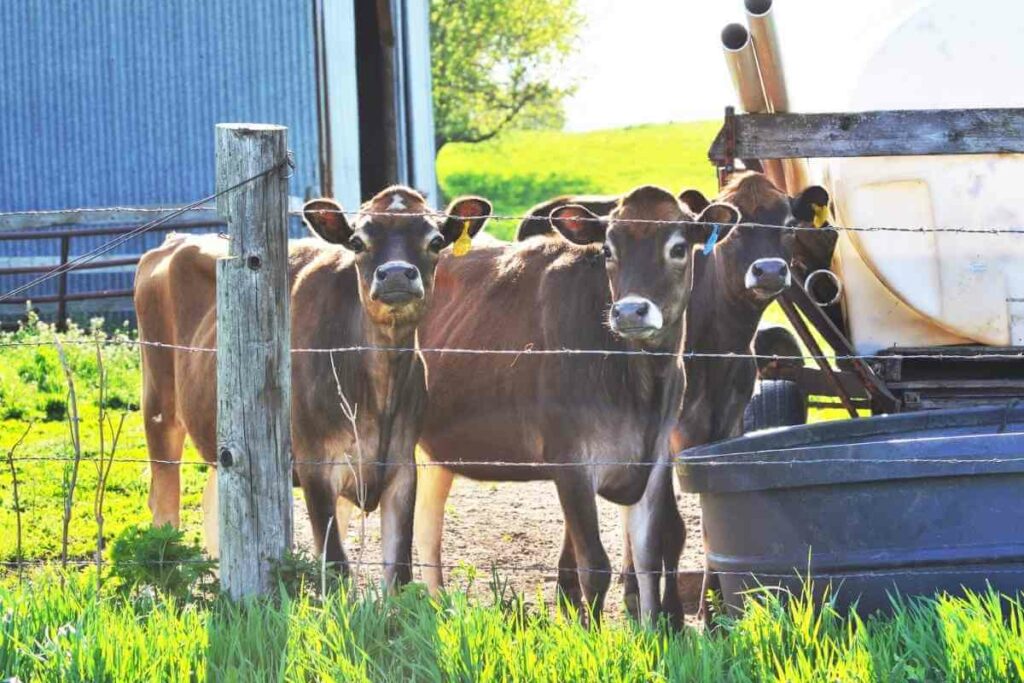
Mini Jerseys consume half of what a standard Jersey cow eats.
Nonetheless, these animals produce two to four gallons of butterfat and protein-rich milk daily.
When milking, remember to check the udder and confirm that the teats are large enough to make the process easier.
Notably, miniature Jersey bulls tend to be more aggressive than cows, especially if they’ve never been breastfed.
Usually, they start exhibiting belligerence at puberty, which is six to seven months after birth. Cold weather might also promote hostile actions.
Miniature Panda Cattle
One of the rarest breeds around, the miniature Panda, is a crossbreed of the Belted Galloway and the Dexter miniature cattle.
Like Pandas, this breed has an all-white face with black stripes around the eyes. It maintains the white ‘belt’ that characterizes Belted Galloways around its midriff.

There are only a few miniature Panda cattle worldwide, and many animal lovers regard them as celebrities.
If you want to see them, visit the Woodland Park Zoo in Seattle, Washington.
Because of their rarity, calves tend to be ‘too close’ to their mothers than other breeds.
Miniature Texas Longhorns
Texas Longhorns are renowned for their grim outlook, and this is often the case when taking a first glance at miniature Texas Longhorns.
That said, the smaller variety isn’t as aggressive and potentially dangerous as its bigger cousin.
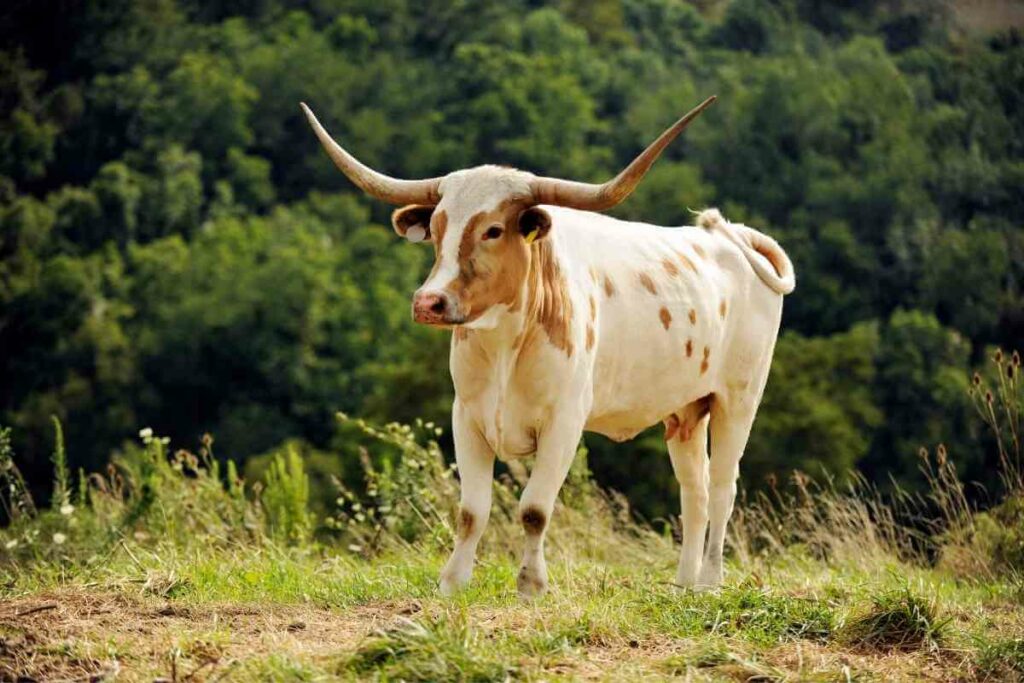
A mature miniature Texas Longhorn bull can measure up to 45 inches, but most animals never attain this height.
On average, this breed lives up to 10 years, during which it can weigh from 350 to 800 lbs.
Texas Longhorns are mostly active during the day and like foraging grasslands for food. When it’s dry, they feed on hay.
Mini Lowline Angus
Surprisingly, the mini Lowline Angus is a product of the accidental breeding of standard Angus cattle.
It’s one of the world’s smallest cattle breeds. These animals are also calm and docile.
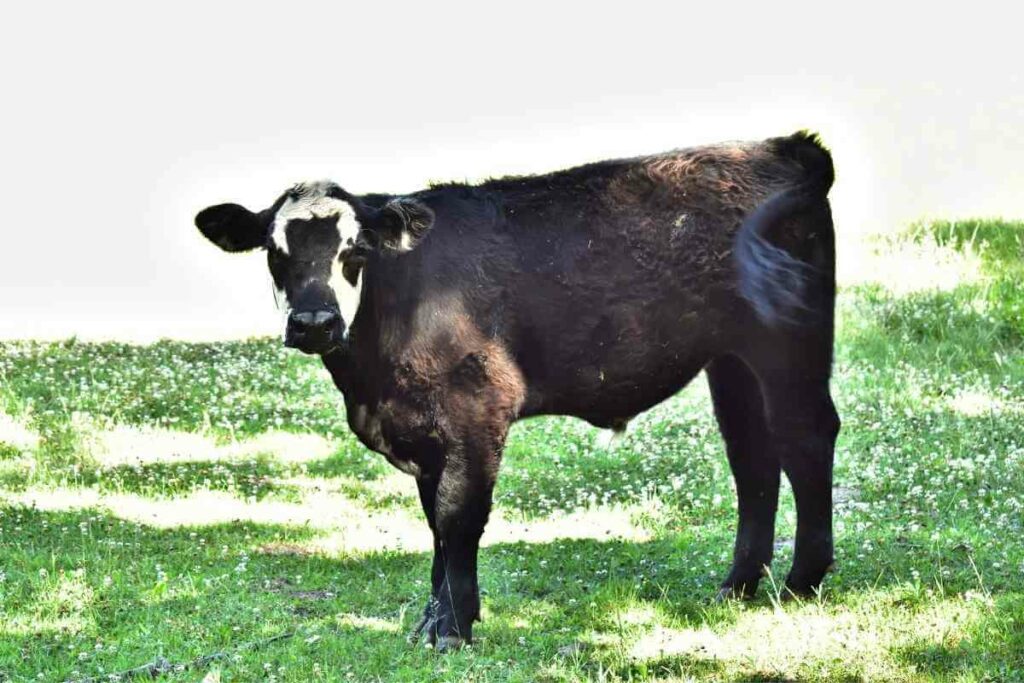
Although it’s small, the Lowline Angus is fairly heavier than other miniature cattle. A mature bull can weigh as much as 1,200 lbs.
The reason behind this enormous body is their feeding behavior – these cattle prefer grazing over eating feeds.
Additionally, this breed has an average lifespan of 18.5 years and can survive harsh climatic conditions.
Even Better: They’re immune to the bulldog gene, a genetic complication that often kills cattle.
Square Meters
The Square Meters breed is native to Australia but has since spread to New Zealand and the United States.
It was bred to create cattle that are fully mature a year after birth.
Besides growing fast, another interesting fact about Square Meters is that they’re a measured breed.
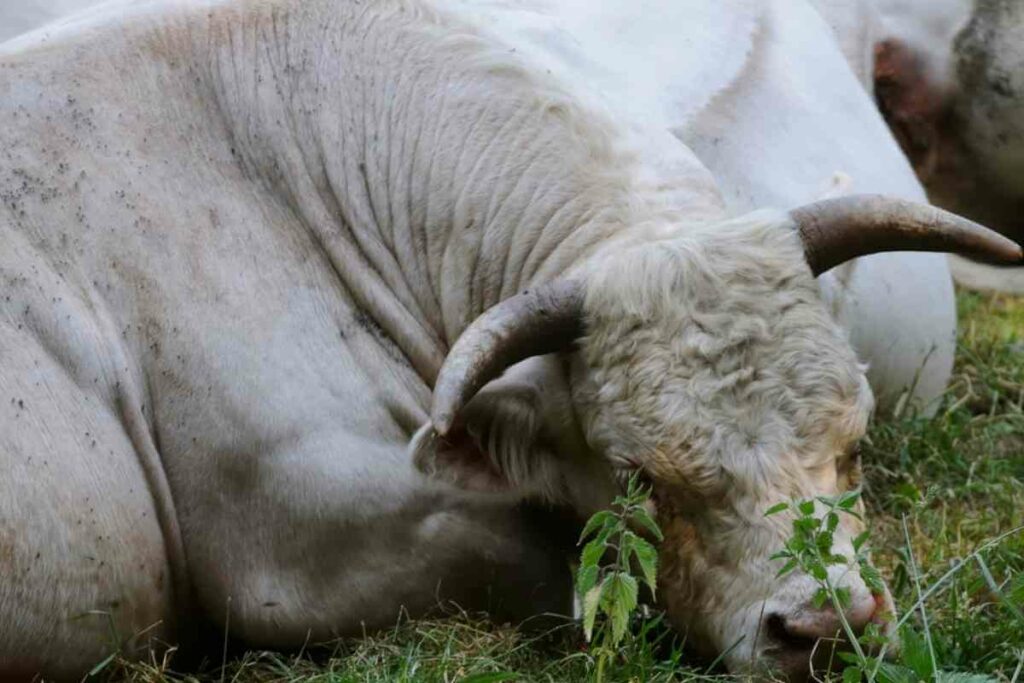
At 12 months, bulls must measure between 1103 and 1103 cm at the shoulder, while cows must measure between 110 and 110 cm.
These restrictions prevent the animal from maturing at the ‘wrong’ pace.
Most Square Meters have gray bodies, though they have a dark chocolate appearance.
The skin has a dark pigment that protects the animal against sunburn and skin cancer.
Concerning temperament, Square Meters are enthusiastic and friendly.
How to Take Care of Miniature Cattle
Like other domestic animals, you have to take proper care of your miniature cows if you want them to live healthily and be productive.
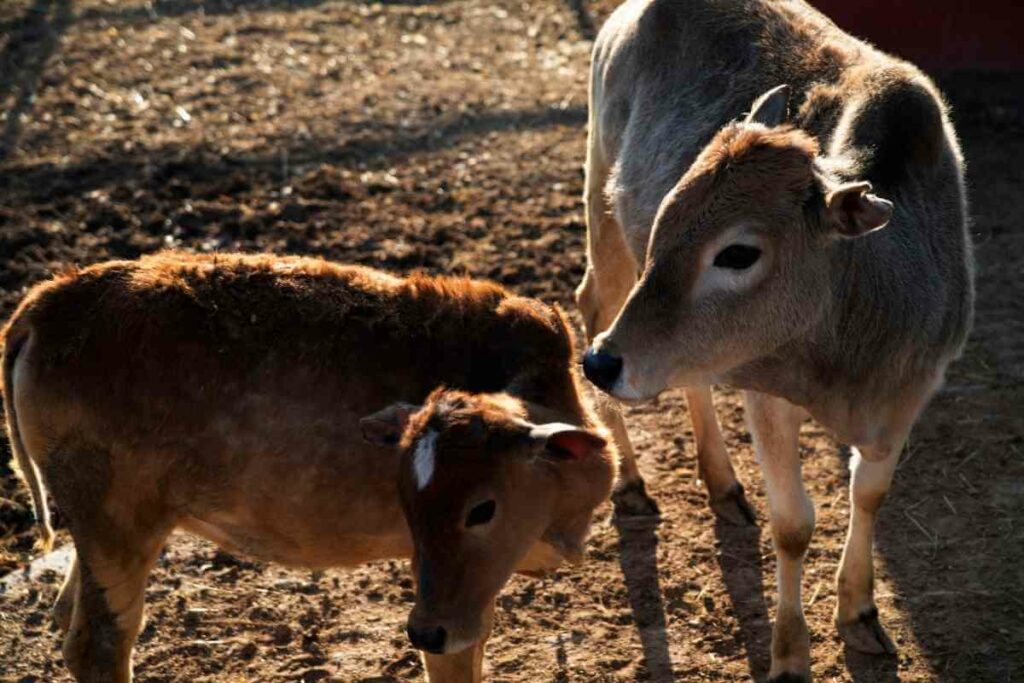
Here are some of the items you need to keep your animals in good condition.
- Calve coats – when it gets cold, you’ll need to keep your animals warm by providing these coats.
- Heat lamps – during the cold season, you can complement the coats with heat lamps.
- Electric milking machines are handy if you have many cows or your animals have small teats.
- Freshwater – this is vital to keeping your animals healthy.
- Herbal ley – this helps in preventing diseases caused by worms and other pathogens.
- Mineral salt blocks – these supplements the nutrients provided by grass and feeds.
Wrapping Up
Whether you intend to keep them as a pet or for milk and beef, miniature cows are an excellent addition to any home farm.
They are less demanding than standard-sized cows and can withstand harsh conditions. If you take proper care, they can last for more than 15 years.
However, it’s essential to prepare yourself before you start this type of farming. Ensure that you have sufficient food and proper shelter before you acquire the animals.
More importantly, have a vet’s number in hand in case the animals develop any health complications.


